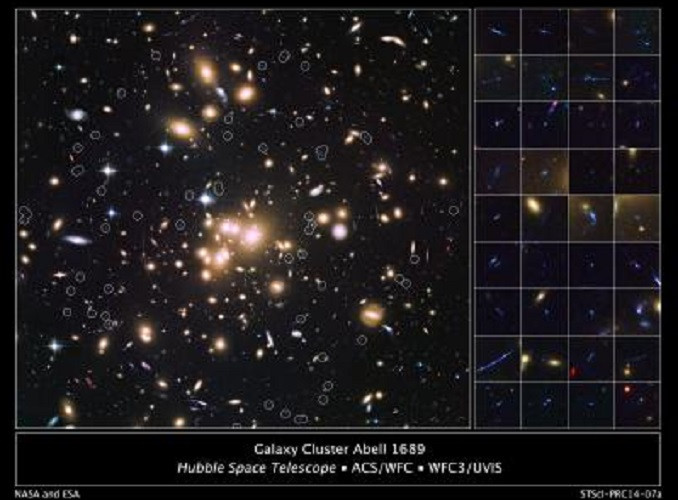Hubble Captures the Remote Galaxies that Gave Birth to Stars at Origins of the Universe

The Hubble telescope has been used to capture the galaxies that gave birth to some of the first stars in the universe over 10 billion years ago.
Astronomers from the University of California, Riverside used Nasa's Hubble Space Telescope to detect the smallest, faintest and most numerous galaxies ever seen in a remote part of the universe.
Researchers spotted 58 galaxies as they would have appeared more than 10 billion years ago, the heyday of star birth. The galaxies are 100 times more numerous than their relatives and are 100 times fainter than previous surveys of the early universe.
They note that the galaxies come from a time when the universe was having a "baby boom" of star formation, which peaked between nine and 12 billion years ago.
The astronomers were able to detect the galaxies using the natural zoom lens of Abell 1689, a giant foreground galaxy cluster that is so huge it magnifies light from far away galaxies due to a phenomenon called gravitational lensing.
Study leader Brian Siana said he believes the galaxies detected by Hubble are from when the universe was 3.4 billion years old. The team say that if this sample is representative of space at this time, most new stars formed within these galaxies.
"There's always been a concern that we've only found the brightest of the distant galaxies," he said. "The bright galaxies, however, represent the tip of the iceberg. We believe most of the stars forming in the early universe are occurring in galaxies we normally can't see at all. Now we have found those 'unseen' galaxies, and we're really confident that we're seeing the rest of the iceberg."
Anahita Alavi, first author on the research paper, added: "Though these galaxies are very faint, their increased numbers means that they account for the majority of star formation during this epoch."
Finding these galaxies will also help to reinforce claims that hot stars in small galaxies produced enough radiation to create a process called 'reionization' (where radiation ionizes hydrogen by stripping off electrons), which occurred about 13 billion years ago and made the universe transparent to light – meaning astronomers can look back in time.
Hubble also showed that the galaxies spotted were tiny, at just a few thousands light years across.
"Even when fully mature, these galaxies will be about one-tenth to one-hundredth the mass of our Milky Way," Siana said. "Because they are undergoing a firestorm of star birth, their light is dominated by the ultraviolet glow of fledgling stars."
© Copyright IBTimes 2025. All rights reserved.






















